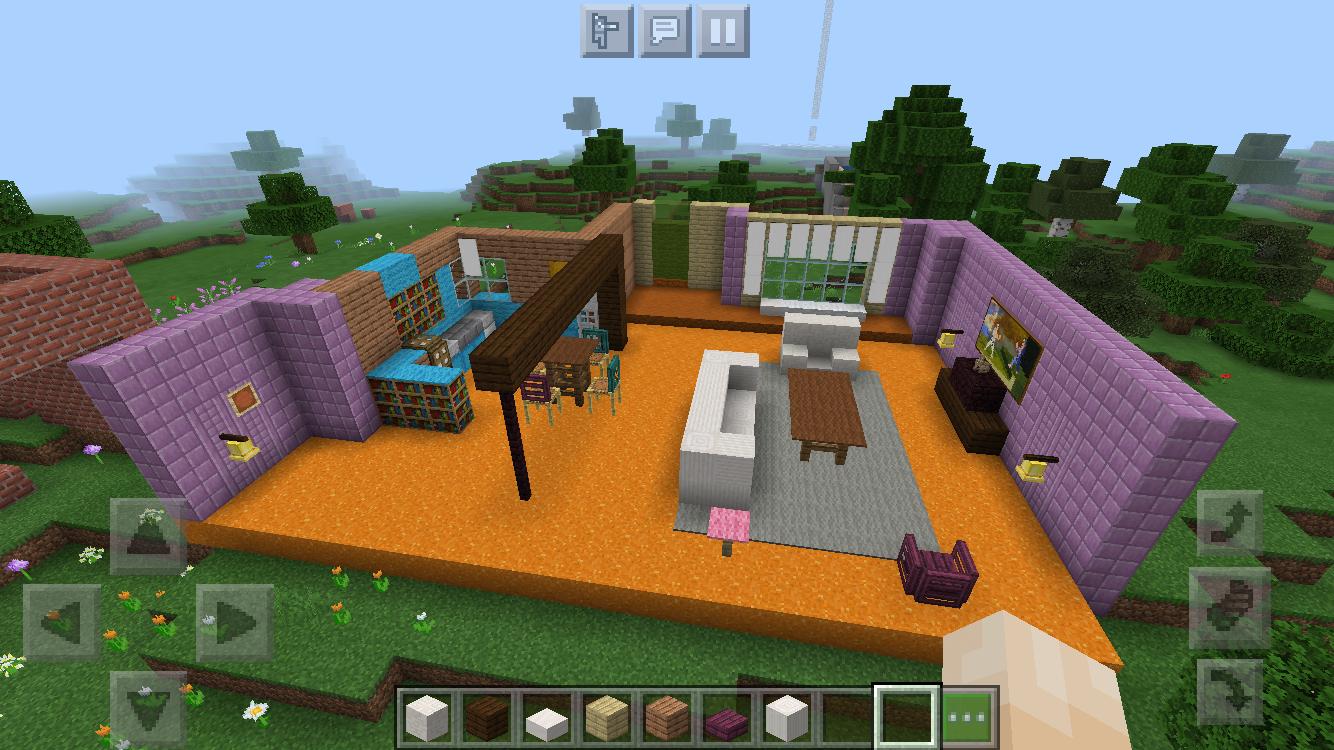DATA VISUALIZATION


This was one of my first tweets with the #mscidel hashtag of the week. Are big data and data-driven concepts that are we have overcome? I mean, I am very conscious about the importance and the relevance of data collection these days. However, I think that big data is something that has been proof it generates so many ethical issues with privacy and biased results, that offers generalizations and trends, but actually is not giving us real “useful” information. Or at least information that doesn’t generate ethical issues.
Big Data represents a number of ethical considerations, particularly around privacy, informed consent, and protection of harm, and raises wider questions of what kinds of data should be combined and analysed, and the purposes to which this should be put.
Eynon, R. (2013).
For years, (and still happening) data has been collected indiscriminately with the idea of having a lot, collecting as much data as possible with the idea that it will help us to solve education system issues. Collecting different data points without and see what it can offer, and what conclusions we can get from there. It seems that over these years teachers, educational institutions, and families have become a data production, responsible to collect and record data, as Williamson, B. (2017), points out in his book: Introduction: Learning machines, digital data and the future of education.
Considering all of these, I wonder why would we like to use big data in education? Are we not moving forward to a more inclusive system, where minority and diversity should be taken into consideration?
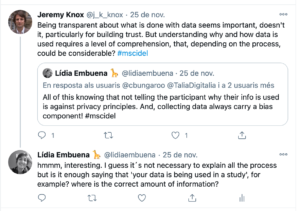
I started the week asking this, and after this week readings, discussions on Twitter and cheating a little with the knowledge of my husband. I can say that big data collection will pass to a better life. I am being optimistic, and I think we are moving to a reality where yes, we accept that our data is being collected, and assuming that is used beyond our complete understanding and capacity.
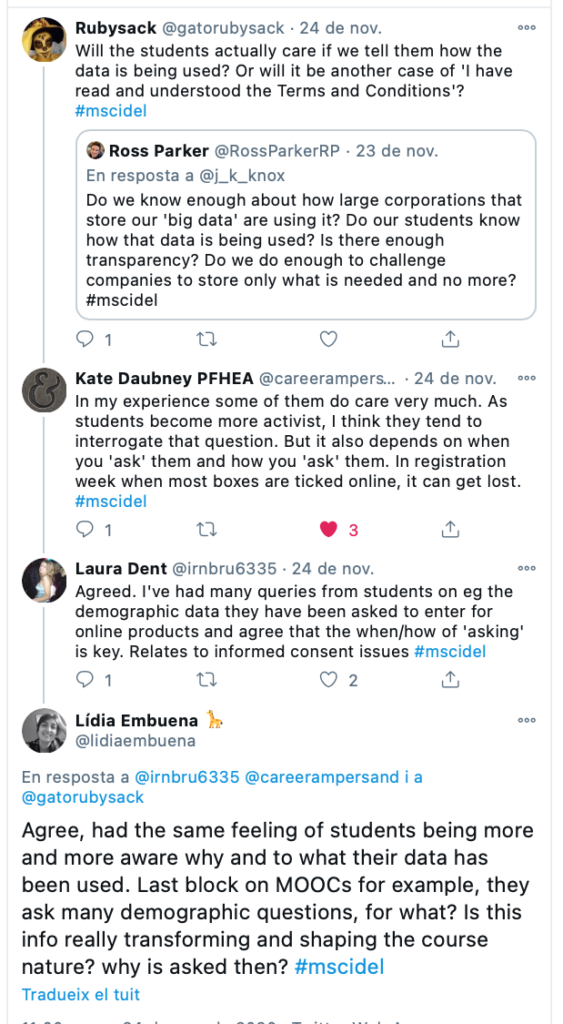
But at the same time, though, we are aware of the importance of being conscious and careful about the data we share and to whom. People are not that open to share personal data as it was years ago, and I would say that the trend now is to talk about models of data collection that guarantee a high level of privacy. If we put the focus on education, we can see how students are more careful with their data, as well as other activists in society. People are aware and are taking a more active role with the collection use of their own personal data.
As I said, I cheated a little here, and I used my husband expertise to know more about privacy and what is the current flow. He works as a Google researcher in machine learning and privacy, so I thought it would be really useful to know what big tech companies care about. Using his knowledge, I have learned that the tendency now, and what companies are working with, is based on building trust on users. How? collecting data as much anonymous as possible. Also storage it’s an issue and collecting everything it has a cost. Privacy is a delicate topic, and considering what has happened in the past, tech companies know that they need to guarantee a maxim level of privacy. In that way, different methods and protocols are implemented to guarantee encrypted data collection. You can read here what I shared on Twitter about the topic. He explained what is Differential privacy and some protocols that are used to minimise the identification of people and treat data as much private as possible.
What he pointed out, and I think it is very important when we talk about education is the tendency to move to a focus data collection, instead of big data. It is a way of having only information that is relevant to the purpose, nothing else, that way it is more difficult to identify the person. As I mentioned while reviewing the MOOC, for example, much demographic data is asked. This should be considered a bad practise because demographic data make us unique easily. If we have several data points from people is difficult to have anonymity, many data means that is difficult to hide using aggregation data. You will never have more random that that real data. For that reason, moving forward to models based on focus data collection is a necessity. And education can and should be playing an active role in this battle.
As a conclusion, and answering my own question, I would say that education should not care about big data, but it should care a lot about focus data collection. I think education has an important role in making people aware of this and pushing for regulation and policies. As my dear classmate Paul, suggested in this tweet, education should be working together with data scientists in order to find consensus and work together to achieve good practices in all different contexts.
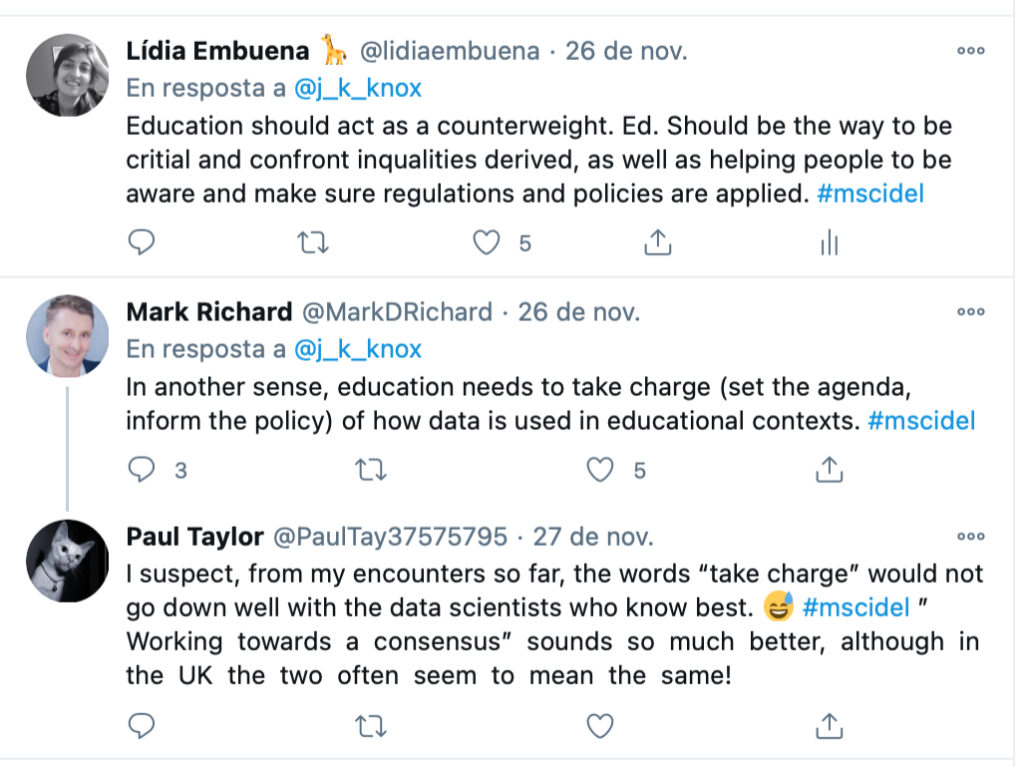
Eynon, R. (2013). The rise of Big Data: what does it mean for education, technology, and media research? Learning, Media and Technology, 38(3), pp. 237-240.
Williamson, B. 2017. Introduction: Learning machines, digital data and the future of education (chapter 1). In Big Data and Education: the digital future of learning, policy, and practice.
Alexandra Wood, Micah Altman, Aaron Bembenek, Mark Bun, Marco Gaboardi, James Honaker, Kobbi Nissim, David R. O’Brien, Thomas Steinke & Salil Vadhan*. Differential Privacy:A Primer for a Non-Technical Audience
Kobbi Nissim, Aaron Bembenek, Alexandra Wood, Mark Bun, Marco Gaboardi, Urs Gasser, David R. O’Brien, Thomas Steinke, & Salil Vadhan* Harvard Journal of Law & Technology Volume 31, Number 2 Spring 2018 BRIDGING THE GAP BETWEEN COMPUTER SCIENCE AND LEGAL APPROACHES TO PRIVACY
Considering the fact that the link that was facilitated to do this week’s task is not working. Actually, it has not worked for the whole week, plus all the conversation that had happened on the formal forum and the other informal chats, I think it is safe to say, that Open badges are not in their best shape.
Also, reading this week articles didn’t help me make a real picture of what an Open badge, I felt jumping from one site to another without really figuring out what was related to the Ahn et al table. I have the feeling of finding better and clearer information on Wikipedia’s site (the open project par excellence) Reading information there helped me to understand and consider what is a real open initiative or, just mere use of digital badges.
I have to thank my classmates for this week because it is thanks to them that I am able to produce something. Thanks to the conversations and uncomfortable questions I had challenged my opinions and thoughts and I have been motivated to find information.
I think I have been very optimistic about the use of badges. Once again, I think my personal experience and my background in tech have created a biased view when considering the current use/success of open badges. I have to say, that part of my optimistic view has been demolished. I still believe that the use of badging is a tendency and it will increase. However, I wonder if it will be the use of OPEN digital badges or only DIGITAL ones. Like Henry Jenkins (2012), I am a sceptic of open badges, especially for educational purposes, because many people in the field consider they don’t carry the same weight as other qualifications. As I mention, the culture and history of badges and the idiosyncrasy of the educational system is a barrier for the open badges to success. However, I think digital badges will be used as an extra validation, motivation and gamification component.
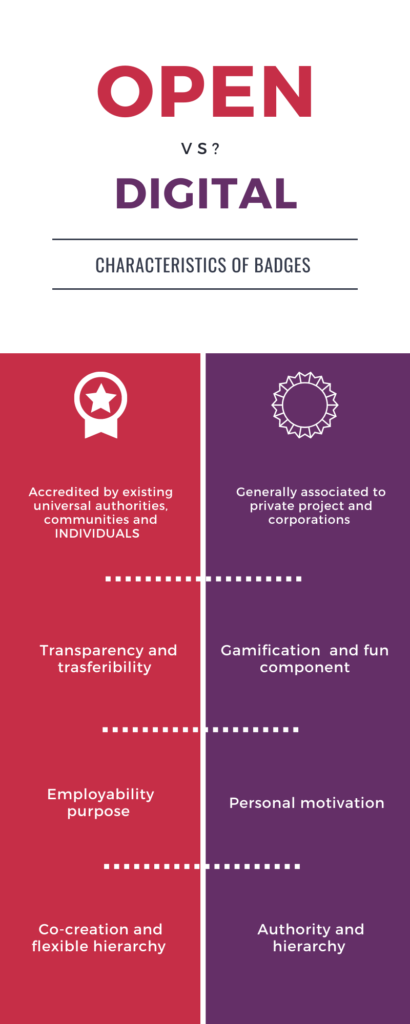
After investigating and thanks to the collaboration with classmates we found some Open Badge projects, and I am going to focus on the Open Badge Passport.
I made this choice because I think one of the most important element to judge if a badge initiative can be considered open or not, and differentiated from a simple digital badge, is based on its transferable capacity. In that way, the Open Badge Passport is a good example to see a platform where users can find badges to earn, as well as having a virtual place to store and show them.
The main feature of this project is the Passport function, so the users can receive Open badges and share them when needed. In that sense, Open Badge Passport gives a clear and easy way to see the badge information. On the Explore section, we find filters like by name, country or advanced search which facilitates the badge hunting. It is clear that they care about having a good search engine that shows you a new badge to earn and badges that can interest you.
Overall, I think the site gives a feeling of transparency and I appreciate it because I think it tackles some of the questions raised by Ahn et al. It helps learners to chose best options for them to get and gives credibility for futures employers, in theory.
However, I think all these good aspects only can become a real game-changer if the initiative is well known, has a good number of badges (relevant for the sectors and variety) and the platform is used by many learners/users. I don’t see this is the reality in this case. I see a platform that is full of good intentions, but it lacks the main important element that is having interesting badges and credential to get. I haven’t found any interesting badge for me to earn (I know that I am only one data point, but it’s the one I have). I actually found that the majority of the badges available were for specific events that have already happened or the badge is only for a specific community, like “students of the University of Southampton”.
An interesting pedagogical value of badges is the options for learns to create their own learning path and I believe that badges offer the opportunity to illustrate personal specifications. I think badges could help to show a more individualised CV for example, where someone who studied “Education science” can show in detail their particular knowledge and skills from another with the same degree. If I think in all my friends from university, our CV says that we own a bachelor in Pedagogy, but it is clear that after 10 years post finishing classes we all have a different set of skills. I miss more emphasis on this aspect.
I share all the motivation and optimism that the people behind the initiative mention here, but sadly I have to admit that I don’t find a tangible sense to have an account on Open Badge Passport. I think their design and infrastructure solve part of the questions raised on the Ahn et al article. I would say that they give an answer to the hypotheticals about Open production (if anyone can create a badge) and Open access (if badges are widely accessible and visible). However, I think the project doesn’t have enough recognition or community behind in order to solve what I consider the most important tension derived from the Open appropriation (if badges are open to divers interpretations by different stakeholders).
Probably these are the most difficult tensions to solve because I of the nature of the education system. Education is a very structured and hierarchy system, with their own inequalities associated, as well as the history and cultural component of badges. I think these factors make difficult the implementation of a real open badge system of co-creating.
I have to admit that I didn’t find this week articles as much as interesting than the weeks before. Maybe because articles are quite old, and they didn’t offer a real new idea to me. I would say that the only bit I take with me this week, is the importance of having a critical perspective on the term “open”, and probably this is the most important element when we are talking about Open Education. As I said, nothing completely new, but it is good to have the reminding alert turned on. I would highlight ideas from the articles: Bayne, S., Knox, J., & Ross, J. (2015). Open education: the need for a critical approach. and Knox, J. (2013). The limitations of access alone: moving towards open processes in education where the importance of having a critical perspective is well-argued.
I have been an active user of open education for the last 10 years, I have done so many MOOCs, I have just enrolled to some of them, but in general, I finish the course and I have paid to get the certification for a few. My partner is a computer scientist pro-Linux and open source, and of course we use it at home, and I am not new to the conversations behind… So, I guess this makes me quite familiar and aware of the reality of what we understand and assume for “open”.
During my professional and personal background, I have been lucky to get familiar with the new paradigm that was Web 2.0. Web 2.0 as an umbrella of changes that created a new way of how content, information and knowledge travels and is created.
While open access to learning resources may be of significant value in education, this paper will ques- tion whether free admittance to information is enough to realise the goals of universal education and economic prosperity often promised by the open education movement (see Atkins, Brown & Hammond, 2007; Caswell et al., 2008; Daniel & Killion, 2012).
Knox (2013)
I am sure, that thanks to open education people who never had access to a certain context, now are able to enjoy a variety of programmes at any time, from anywhere without cost. If we think in a 0-10 scale to measure the accessibility to knowledge, I would say that someone that had 4 in a level of access to the information, with OER and MOOCS could rich a level of 7 or 8. Of course, this is not solving the big issue that is that we still have so many people at the level of 0-2 of access to knowledge.
Five years ago I lived in San Francisco, CA and I volunteered in some public Highschools helping students to improve their Spanish skills. I was amazed by how many activities and extracurricular projects students did in order to be competitive when applying for the university. I never saw that in Spain, being accepted in the university doesn’t work like that.
Anyhow, I knew some students were taking Coursera courses of coding and programming, some at a very high level. They wanted to be ready for university and show that in their applications, but the truth was that they would probably be more than ready before starting studying. Clearly, these students were able to do this where the most privileged ones, usually white guys. They have the time, the resources and the support from home*. The group of students I helped, had other kinds of problems, and their goals were others, nothing that could be improved by joining to a Coursera course and learn by themselves.
Learning autonomously it is not easy at all, and MOOCs and OER assume that everyone will have the ability to work and learn independently, which is not easy and it requires a specific set of skills. Also, having access to open education is not that easy, some people still struggling to have a computer and wi-fi at home. Sure, the options are there, but it doesn’t mean that all barriers are demolished.
I acknowledge all the limitations described by Knox, and I embrace the need for a constant critical eye. However, I would say that we cannot deny that for the first time in the history information (and the creation of content) is not owned for a small bunch of people. Of course, there are barriers and power hasn’t flipped as much as I would like, but technically there is an open canal of communication for communities and groups that never had the option to create content and publish it before.
I am not being naif here. I now that even we have the technology and resources to open the knowledge and the creation of content to everyone, the truth is that who rich that information still a privileged percentage of people. What do we have to do then? As I said at the beginning, I agree with this week authors when they point out the importance of being critical, but at the same time, I want to be optimistic, I think MOOCs and OER are not solving the biggest problem, but they are a good step to rich changes. In fact, I am not sure there is a possible solution for the bigger problem that can be tackled from education by itself.
(*)Around May of this year I finished a MOOC on Coursera, it was quite interesting, and I linked some thoughts from a video I saw in the course. You can check it here. The main idea I wanted to highlight is that after 40 years of different studies (In the US) have shown that the student’s success is more impacted by the reality at home and society than by the school. Even, we can create the perfect school, with the perfect teacher, with the perfect content, society and family environment will have a huge impact on a student’s life. And we cannot pretend to reform that from the education without pointing the issues of the world’s reality.
Bayne, S., Knox, J., & Ross, J. (2015). Open education: the need for a critical approach. Learning, Media and Technology, 40(3), pp. 247-250.
Hodgkinson-Williams, C. A., & Trotter, H. (2018). A Social Justice Framework for Understanding Open Educational Resources and Practices in the Global South. Journal of Learning for Development, 5(3), 204-224.
Knox, J. (2013). The limitations of access alone: moving towards open processes in education. Open Praxis, 5(1), pp. 21-29.
First of all, I wanted to use some open-source programmes to do the video, I was playing a little with OpenShot and Kazam, sadly my laptop died finally this week, and I needed to find other ways to record last minute. You will see in the video that appears the name of my husband… Long story short, I used his work laptop and an internal tool to record and his name is everywhere… sorry about.
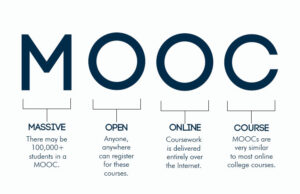
Find here the summary of the main ideas of the video, and the questions I wanted to raise. I know that 16 minutes of a not very fluid video are difficult to swallow 🙂
Structure, design elements:
Thoughts and questions:
On the other hand, I found the post I wrote last year when I was attempting to do the course for the first time. Find the text here, in case you are interested, I realise now it was not a deep analysis…
Knox, J. (2013). The limitations of access alone: moving towards open processes in education. Open Praxis, 5(1), pp. 21-29.
On my first post of this block, I described a learning space like “a prepared environment where the student can interact, play and learn from it. We can find a learning space in real life, however, I am thinking in a place that is designed, it pretends to simulate the real world in a challenging but also no-threatening way. It is a safe space of not judgment and where the student can feel free to investigate and challenge their abilities with the support of materials and knowledge.”
After these two weeks, I have been going back to that post to examine my previous thoughts after reading the articles, everyone’s metaphor, and especially the comment you left. This has been resonating in my mind the whole week. “I wonder whether this accommodates the contemplative walk where we find ourselves working through a problem, or the moment in the middle of the night where we might be struck by an original idea, and so on? Can a learning space not also be somewhat more impromptu and unplanned? I suppose it depends on how we define learning?“
It is well exposed on Bayne et al (2014) and Nordquist, J. & Laing, A. (2015) articles, that we are in the situation to affirm that technology has changed the way we can work and learn such that the constraints of time and place are re-defined. Learning space is a fluid and mobile concept and it goes beyond a class or virtual class. However, ‘contemplative walk where we find ourselves working through a problem’ can be defined as a learning space?
I completely embrace the idea that learning can happen everywhere, anytime! Also, I totally share the idea that you can learn while you are walking around or sitting in a cafe. However, where do we draw a line here? depending on what is happening in our brain? I mean, if we are in a cafe solving a problem, then we are learning and the cafe becomes a learning space? but if we are in a class thinking and planning the next summer (without following the class activity), we are not in a learning space?
Going back to the idea of “prepared environment”, I am still thinking that a learning space requires some preparation/intention behind, of course, a cafe can become a place where learning might happen, but not sure if it should have the category of learning space. I hope I can explain myself.
When I think about “prepared” I mean, that someone (the teacher) has an idea in mind, they is thinking in a specific goal to achieve by the students. This set up doesn’t mean that the activities and steps to rich the goal will happen in only one space, in a specific time or with concrete resources. If I use this course as an example, I would say that the prepared environment is: the IDEL virtual portal, with all their elements: announcements, forum, materials and curated articles. Teachers of the course don’t know where the students will engage with the materials and when this will happen, but you know and have some ideas and expectations of what students have to do in order to show progress and learning, don’t you?
That way, I would say that even that I can find my self walking around thinking about the course, and having unplanned learning moment, I would argue that this moment was somehow planned by you (James, as a teacher). Because you were anticipating (and hoping) I would have an “aha moment” and I would learn something. I guess for that reason, we could call ‘learning space’ to all the places I have been thinking and engaging with the materials (physical or virtual).
I remember, when I was teaching people that will become educators of after school classes, normally people with a little background in education. I remember I selected and designed some activities that I thought it was a journey to arrive at a certain point. I expected they would be able to change their view and preconceptions about children. I didn’t want to arrive at the class and make a statement. I wanted them to think about and arrive at their own conclusions, obviously with my particular bias because we know that education is never neutral! I wanted them to have an “aha moment”, and probably that didn’t happen during the hours we were together in the class. I also prepared reading, poems and song for them. I am sure they engaged with those on different places, and probably they critique, answered or made questions about the materials in their minds, far away from the class. I would consider those moments as something prepared. Does it make sense?
Of course, I think that someone can learn without anyone acting as the puppet master of their process of learning! this is not what I am thinking. But, for me, in order to consider a “learning space,” there is involved this idea of preparation and of course interaction with someone acting as a guide, and the design behind.
Learning environments are successful because users are motivated and educated to learn how to use them in particular successful ways. They are helped, educated, and supported to use environments in new ways. This is particularly the case when technology becomes an increasingly significant aspect of the learning environment. This means that the planners, managers, and leaders of learning environments have themselves also to become active agents in the curation, facilitation, and activation of the networked learning landscape that they have helped to brief, design, and construct.
Nordquist, J. & Laing, A. (2015)
As a conclusion, I would say that my previous idea of what is a learning space has not been changed completly, but it has been enriched with more arguments and thoughts. Today I would say that learning space can be defined as the structured context that has been designed to let students play, think and learn. The prepared environment is not only a place where students can learn from, the kind of preparation can make that students engange and learn from a huge range of fluid and open spaces.
Following your suggestion about trying to go further into exploring the use of different resources this week I have intended to use tools I never used before, for example, ThingLink, actually, I think it is the first time I do an interactive image.
In this image I am trying to express what is my engagement with the IDEL course, making special attention to this week’s topic: learning spaces.
I used the University ID because it is my personal connection to the programme. I wanted to make the ID the protagonist of the image story. I carry my ID everywhere, basically because I have it in my phone case. An interesting fact is that I don’t carry it in my wallet. When I got it, I decided to put it on the phone case where I don’t have many spaces for ids, but I keep the important ones: bus ticket, debit card and university ID. Why did I decide to carry it there? I am not sure, maybe I am giving some mysticism, but I have realised that this ID is what makes me feel connected to the course and makes me identify as a student, probably it what makes me feel to be in the campus, whatever I am, embracing the concept of new mobilities paradigm’ that is discussed by Bayne, Gallagher and Lamb (2014), which supports learning in unbounded regions and terrains.
It has shown that the material campus continues to be a symbolically and materially significant ‘mooring’ for a group of students who may never physically attend that campus.
Bayne, Gallagher and Lamb (2014)
With the image, I want to present the different places where I have engaged with the IDEL course and the different tools and resources I have used so far. I would say that my laptop has been my main moored item. It is quite funny because my laptop is not portable anymore, it only turns on when is charging, so it really moors me. However, I feel that my learning space has been fluid in terms that I move around my home depending on what is space is free and quiet to be. Usually, the headquarters is my living room, a comfortable armchair in a nice corner where I like to sit to read and, of course, to write all the post in my blog.
Sometimes, I go to use the uplift desk (usually when I want to keep my eyes open and don’t fall asleep), or a read in the bedroom when everyone is sleeping. On this week Padlet I have discovered that some classmates use a voice reader to hear the articles and be able to do another thing at the same time. I have been inspired by them, and I am sure I will use it in the future to brake more bounded and rigid container that is “reading”.
As you can see in the image, I have used a Kindle, which helped me to be freer and bring my learning space outside the house, for example checking the materials from a playground. But I have also used inside, reading in the Kindle and writing in the laptop. Many times I have found myself having two virtual places used at the same time, for example playing Minecraft on my phone while I was checking tutorials on the laptop. I can say that I have deflated the sedentarist claims.
